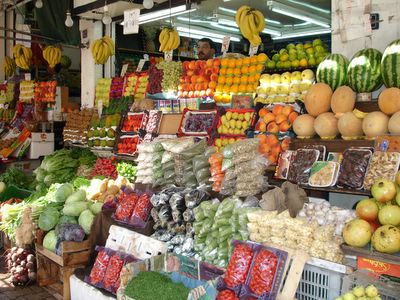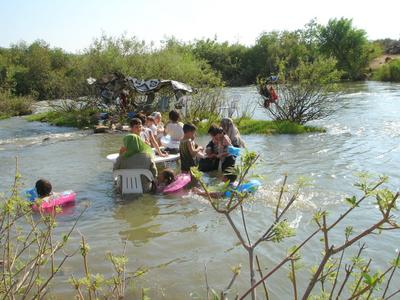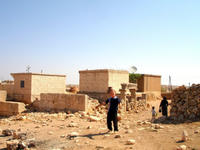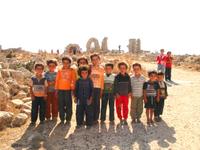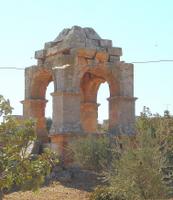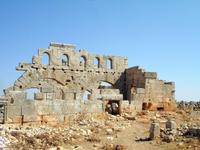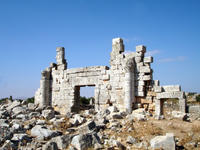Calls Of Peddlers
Between alleys and markets, vegetables vendors used to come loading their mules with fruits and vegetables riding to the city from their farms. Every few moments they would cry out, monotonously naming their wares, they used to have special calls and songs on fruits and vegetables calling each by a special phrase, nowadays a lot of these calls have vanished, some are rarely still used although most of these traditions are totally forgotten, but you might hear some of it here and there in some old parts of Damascus…
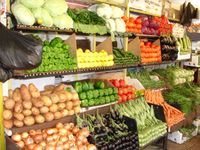 - For example They used to cry out about selling cucumbers, “Isabe3 el Bubu ya khyar” which means it is very small like the baby’s fingers!
- For example They used to cry out about selling cucumbers, “Isabe3 el Bubu ya khyar” which means it is very small like the baby’s fingers!
- Watermelon: “3al miksar ya battekh”, or “3al sikkeen”, here it means that the vendor is very much sure of the quality of the watermelon he sells, so you can cut it with a knife and see how juicy red flesh it is.
- Banana: “Abu n2ta ya moze” which was a famous kind of banana that has small black dots on its skin.
- grapes: “ Zaini ya 3enib” or “Derani ya 3enib” which are the palaces where they come from.
- Quince: “ Lil ma3oud ya sfargel” means quince for jam.
- Tarragon: “khayen” means traitor, they called it traitor because it is known that they planet it in a place while it grows in another place.
- beetroot: “ 3asal 3asal” it means honey, in other ward, it tastes sweet like honey.
- eggplant: “ Aswad metel el leil ya baitenjan” it means that these eggplants are black like the night which is a good sign!
 - For example They used to cry out about selling cucumbers, “Isabe3 el Bubu ya khyar” which means it is very small like the baby’s fingers!
- For example They used to cry out about selling cucumbers, “Isabe3 el Bubu ya khyar” which means it is very small like the baby’s fingers!- Watermelon: “3al miksar ya battekh”, or “3al sikkeen”, here it means that the vendor is very much sure of the quality of the watermelon he sells, so you can cut it with a knife and see how juicy red flesh it is.
- Banana: “Abu n2ta ya moze” which was a famous kind of banana that has small black dots on its skin.
- grapes: “ Zaini ya 3enib” or “Derani ya 3enib” which are the palaces where they come from.
- Quince: “ Lil ma3oud ya sfargel” means quince for jam.
- Tarragon: “khayen” means traitor, they called it traitor because it is known that they planet it in a place while it grows in another place.
- beetroot: “ 3asal 3asal” it means honey, in other ward, it tastes sweet like honey.
- eggplant: “ Aswad metel el leil ya baitenjan” it means that these eggplants are black like the night which is a good sign!
